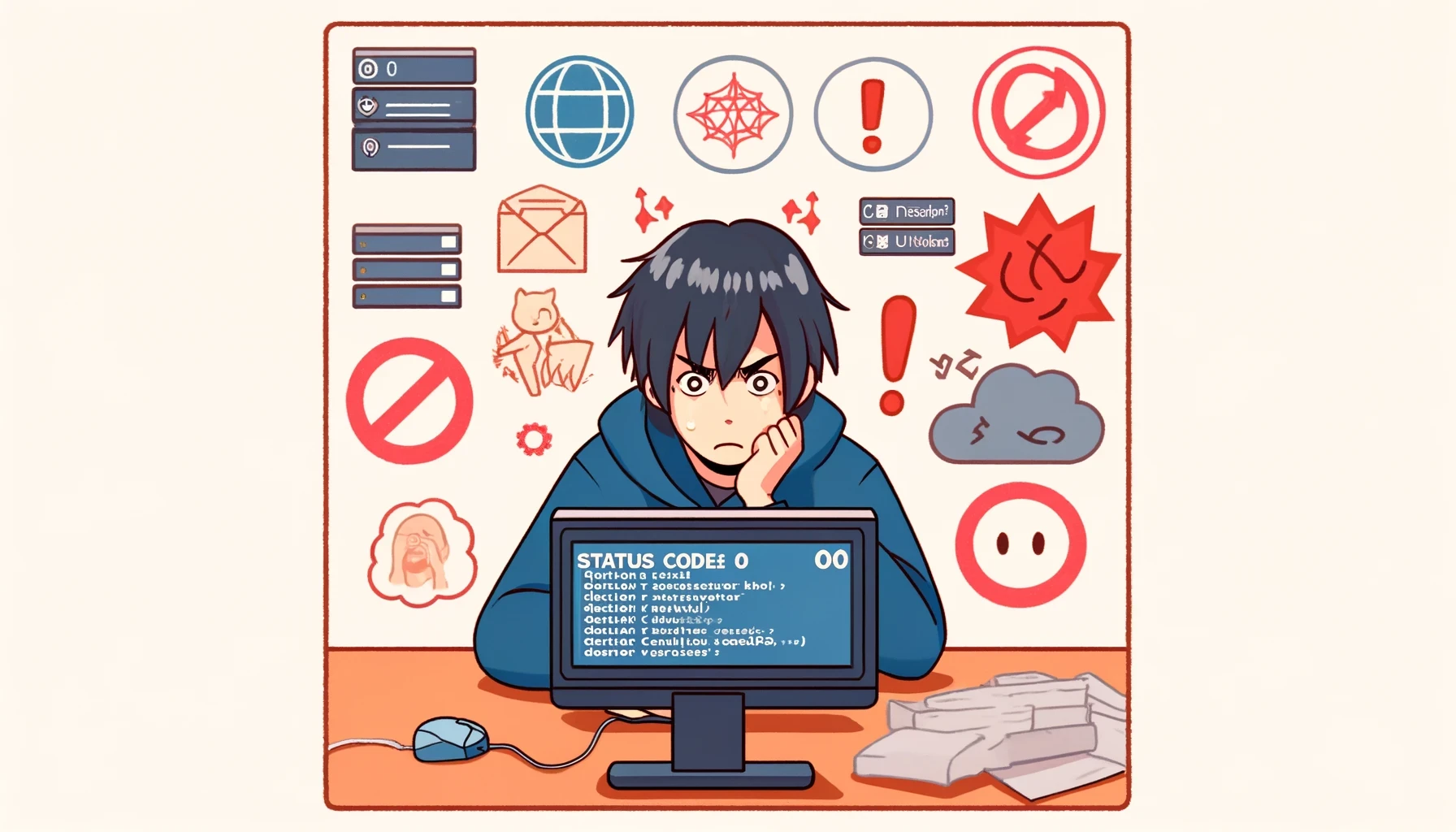Status Code 0 Explained
Jun 2, 2024

When dealing with web development and network communication, encountering various HTTP status codes is common. These codes provide information about the state of the request and response between the client and the server. However, one code that often confuses developers is "Status Code 0." In this article, we'll explore what Status Code 0 means, its causes, and how to address it.
What is Status Code 0?
Status Code 0 is not an official HTTP status code defined by the Internet Engineering Task Force (IETF). Instead, it is a generic code used by web browsers and client-side applications to indicate that no response was received from the server. This can happen for several reasons, and understanding the context is key to diagnosing the issue.
Common Causes of Status Code 0
Network Issues
Network problems such as loss of internet connection, DNS issues, or network timeout can result in a Status Code 0. The client cannot reach the server, and thus no response is received.
Cross-Origin Resource Sharing (CORS) Issues
When making AJAX requests to a different domain, the server must include the appropriate CORS headers. If these headers are missing or incorrect, the browser may block the request, resulting in a Status Code 0.
Client-Side Errors
Errors on the client side, such as script errors, misconfigured request settings, or browser-specific issues, can cause the request to fail silently, leading to a Status Code 0.
Server Misconfiguration
Server misconfigurations, such as firewall rules or server crashes, can prevent the server from responding to the request, resulting in no response and a Status Code 0.
Canceled Requests
If a request is canceled by the client or the browser before a response is received, it can result in a Status Code 0.
How to Diagnose and Fix Status Code 0
Check Network Connectivity
Ensure that the client has an active internet connection. Verify that there are no network issues that could be causing the request to fail.
Review CORS Configuration
If making cross-origin requests, verify that the server includes the correct CORS headers. Ensure that
Access-Control-Allow-Origin,Access-Control-Allow-Methods, and other relevant headers are correctly set.
Inspect Client-Side Code
Check the client-side code for any errors or misconfigurations. Use browser developer tools to debug and identify any issues in the JavaScript code or request settings.
Server Configuration
Ensure that the server is correctly configured to handle the incoming requests. Check server logs for any errors or issues that might prevent it from responding.
Handle Canceled Requests
Implement error handling in the client-side code to properly manage and log canceled requests. This can help in identifying when and why requests are being canceled.
Example: Diagnosing Status Code 0 with CORS
Imagine you have a web application that makes an AJAX request to an API hosted on a different domain. The request fails with a Status Code 0. Upon inspecting the network request in the browser’s developer tools, you notice that the response headers are missing the Access-Control-Allow-Origin header. To fix this:
Server-Side: Ensure that the server includes the appropriate CORS headers in its response:
Client-Side: Verify that the request is correctly configured to handle cross-origin requests:
By addressing the CORS configuration, the request can successfully reach the server and receive a valid response, resolving the Status Code 0 issue.
Conclusion
Status Code 0 can be a challenging issue to diagnose due to its generic nature. However, by understanding its common causes and systematically troubleshooting network connectivity, CORS configurations, client-side code, and server settings, you can effectively resolve this issue. Proper error handling and debugging practices are essential to maintaining robust and reliable web applications.
EzUptime is a simple yet efficient Uptime Monitoring service
Learn more
